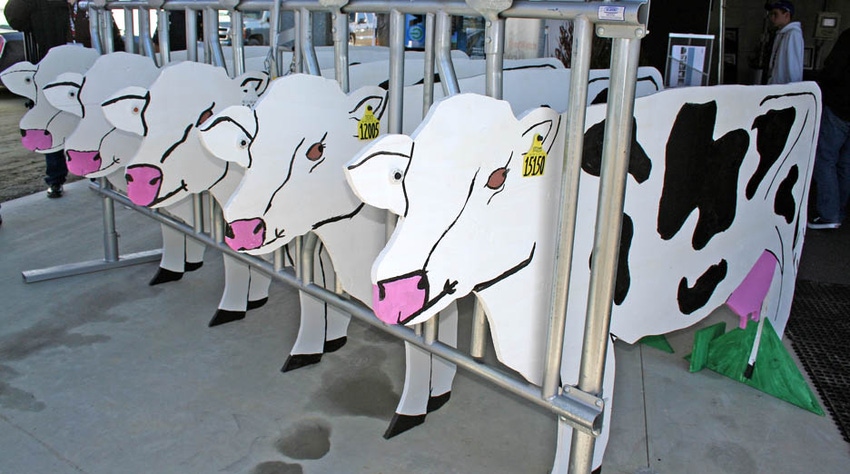April 26, 2013

USDA renewed a historic agreement with U.S. dairy producers to accelerate the adoption of innovative waste-to-energy projects and energy efficiency improvements on U.S. dairy farms, both of which help producers diversify revenues and reduce utility expenses on their operations. The pact extends a Memorandum of Understanding signed in Copenhagen, Denmark, in 2009.
"Through this renewed commitment, USDA and the Innovation Center for U.S. Dairy will continue research that helps dairy farmers improve the sustainability of their operations," Agriculture Secretary Vilsack said. "This vital research also will support the dairy industry as it works to reach its long-term goal of reducing greenhouse gas emissions by 25 percent by 2020."
The Secretary signed the agreement this afternoon at the White House and was joined by representatives of the Innovation Center for U.S. Dairy and Dairy Management, including Thomas P. Gallagher, CEO of the center. One objective of the MOU is to increase the construction of anaerobic digesters and explore innovative ways to use products previously considered waste streams from dairy production, processing and handling.
USDA support for agricultural and waste-to-energy research has played a key role in the agreement's success to date. Since signing the MOU, USDA has made nearly 180 awards that helped finance the development, construction, and biogas production of anaerobic digester systems with Rural Development programs, such as the Rural Energy for America Program (REAP), Bioenergy Program for Advanced Biofuels, Business and Industry Guaranteed Loan Program, Value Added Producer Grants, amongst others. These systems capture methane and produce renewable energy for on-farm use and sale onto the electric grid. Additionally, during this period, USDA awarded approximately 140 REAP loans and grants to help dairy farmers develop other types of renewable energy and energy efficiency systems at their operations.
Also, USDA's Natural Resources Conservation Service (NRCS) has provided $257 million in funding since 2009 that has helped more than 6,000 dairy farmers plan and implement conservation practices to improve sustainability. NRCS support for the dairy industry has resulted in 354 on-farm and in-plant energy audits as well as 18 conservation innovation grants for dairy-related projects during the past three years.
Anaerobic digester technology is a proven method of capturing methane from waste products, such as manure, and converting into heat and electricity. The technology utilizes generators that are fueled by the captured methane. Dairy operations with anaerobic digesters routinely generate enough electricity to power hundreds of homes per year.
Gallagher added, "We have a long and strong relationship with USDA and Secretary Vilsack, and dairy farmers and the dairy industry are very happy that USDA is entering into the next MOU with the Innovation Center. We are all interested in sustainable agriculture and producing good food responsibly, while bolstering an important rural economy, and this new MOU lays out the roadmap for more improvements. That's good for dairy, good for the economy and good for consumers."
More from Western Farm Press
Times are good for California agriculture
Rush to ban neonicotinoid pesticides often political
About the Author(s)
You May Also Like




